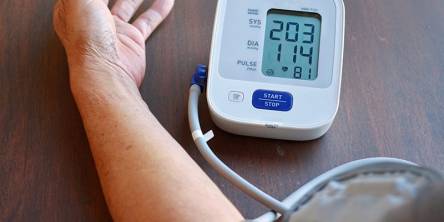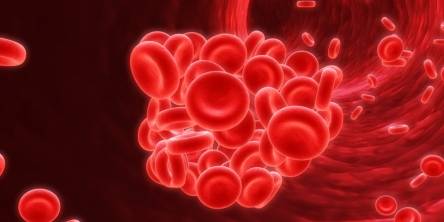Inherited Heart Problems
Inherited heart problems are those that have been passed on through our parents’ genes. They are caused by a mutation or fault of one or several genes. When one of the parents has a faulty gene, there is a 50% chance that you inherited it. If you did, then there is also a 50% chance that you would pass it to your children.
Inherited heart problems may often cause no symptoms, but at the same time can be life-threatening, affecting people of any age. A person may have a faulty gene and never develop any symptoms of the condition itself. Still, if the same faulty gene has been passed to his child, the child may develop symptoms. Most of the people, however, are unaware that they have inherited heart problems and, unfortunately, the first time a family becomes aware of being affected is after a sudden cardiac death.
The most common inherited heart problems are:
Heart muscle conditions or cardiomyopathies, which affect the heart’s physical structure and interfere with the heart’s ability to pump blood:
- Restrictive cardiomyopathy
- Dilated cardiomyopathy
- Hypertrophic cardiomyopathy
- Arrhythmogenic right ventricular cardiomyopathy
- Left ventricular non-compaction cardiomyopathy.
These heart muscle conditions can oftentimes result in various degrees of heart failure.
Heart rhythm disturbances or arrhythmias, which affect the electrical system of the heart and its ability to properly squeeze and relax:
- Long QT syndrome
- Short QT syndrome
- Brugada syndrome
- Progressive cardiac conduction defect
- Catecholaminergic polymorphic ventricular tachycardia
- Sudden arrhythmic death syndrome.
Inherited arrhythmias can result in rapid heartbeat, dizziness, lightheadedness, fainting or sometimes even sudden death.
Very high cholesterol levels, where an abnormal gene leads to a high cholesterol level, specifically very high LDL (bad cholesterol) levels, which leads to cholesterol buildup in the arteries and plaque formation, resulting in atherosclerosis:
- Familial hypercholesterolemia.
Accelerated deposition of cholesterol in familial hypercholesterolemia leads to heart disease in early life, resulting in heart attacks, angina pectoris and occasionally strokes, often as early as at the age of 20.
Structural abnormalities of the aorta, which affect transportation of oxygen-rich blood to the upper and especially lower parts of the body:
- Aortic valve stenosis
- Coarctation of the aorta.
- Aortic abnormalities can cause high blood pressure or heart damage.
Marfan syndrome. This is an inherited condition of the body’s connective tissues that provide support to other organs and tissues. Most dangerous features of this syndrome are enlargements of the aorta and defects of the heart’s mitral valve.
Family members share not only genes but behaviors, lifestyles, and environments that can influence their heart health. Thus, the risk for coronary artery disease increases when heredity combines with unhealthy lifestyle choices, such as unhealthy diet, physical inactivity or smoking. The more risk factors you have, the more likely you are to develop heart problems, and even though you can’t change your genes, there is plenty you can do to reduce the risk and protect your heart.
Following the pattern of the heart problem that runs in your family can help physicians predict the likelihood of you having the same condition. Moreover, genetic testing is becoming increasingly available for inherited heart problems. A blood test can now be performed to detect all known inherited heart problem genes, boosting the prospect of diagnosing potentially fatal defects and helping people to obtain appropriate treatment.
Knowing your family history, identifying family members with faulty genes and detecting heart disease early can help avoid fatal cardiac problems and take steps to minimize the risk of complications. Medications, lifestyle changes or surgery, in particularly severe cases, can help you and your family members live a normal life with an inherited heart problem.
Similar Articles
So you’re halfway up the stairs, just a few more steps to go, and suddenly, you feel like you’ve just run a marathon. Your heart’s racing, your lungs are working overtime, and you’re left wondering if you’re that out of shape—or if there’s something more sinister going on. Don’t worry, you’re not alone
Heart disease claims the lives of 9 million people every year. There are lots of small habits and lifestyle choices that can have a negative impact on the health of our hearts, especially when they are amplified over the course of a lifetime
It can be difficult to know when you have high blood pressure because the symptoms and signs are not always obvious. If left unchecked, however, it can gradually damage your blood vessels, heart, kidneys, and other vital body organs. Blood pressure fluctuations can also be dangerous.
A reliable AED plays a vital role in increasing the survival rate of SCA. This post lists 8 reasons to tell why we need a reliable AED device and something you need to know about the AED.
Normal heart rate in people is 60-100 beats per minute. But if the heart rate is lower than 60 beats per minute, that may indicate bradycardia development. If the pulse is constantly 30-40 beats per minute and it doesn’t increase even during physical activity, it’s a quite dangerous condition.
In recent decades, Western medicine has shifted its main focus quite dramatically, from infectious diseases towards cancer and chronic conditions, such as heart, stomach and liver issues.
According to statistics, people suffering from diabetes are 1.5 times more likely to develop a stroke than those who don’t have this disease. So why does it happen? The connection between these two conditions lies in the way the body transforms glucose into energy.
Black, green, white or red teas come from the same plant Camellia Sinensis. The difference lies in the processing method: Green tea is made from the buds and top two leaves of a shrub, which are then quickly steamed to prevent fermentation
Blood clotting is a necessary process that in certain instances prevent the body from losing too much blood. When you get a paper cut or a minor injury, a blood clot stops the bleeding and falls apart.









